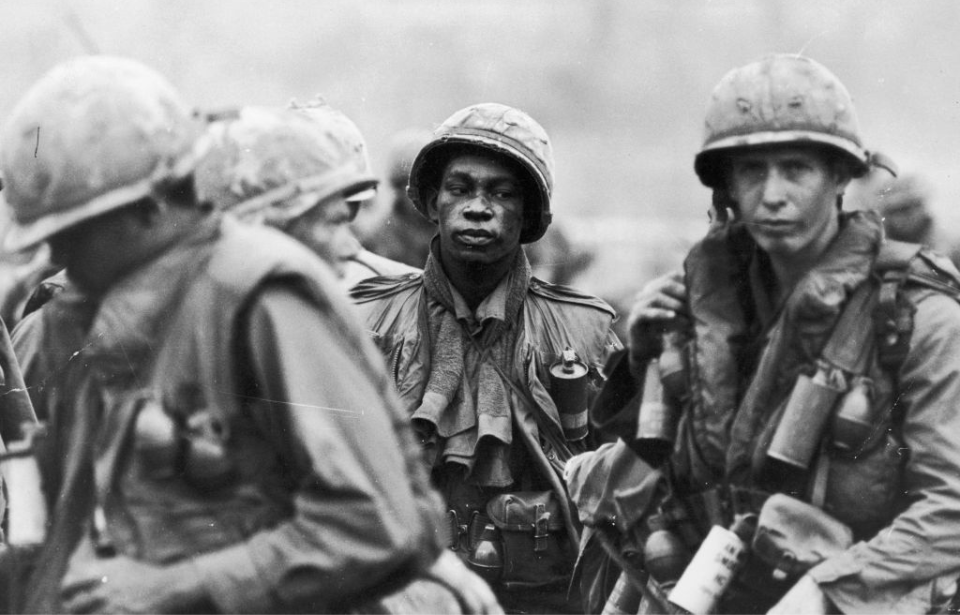The Vietnam War, one of the most contentious conflicts of the 20th century, witnessed numerous fierce enagements that left a lasting impact. Among them was the Battle of Khe Sanh, which stands out as a momentous confrontation that took place from January to July 1968. The just over six-month-long fight between the American and North Vietnamese not only showcased the conflict’s intensity – it also shaped public opinion on the war itself.
The above image was one of many taken by legendary photographer Terry Fincher. He served five tours in Vietnam while covering the conflict for the Daily Express. This particular photo, taken in April 1968, shows US Marines in the midst of the Battle of Khe Sanh as they wait to take part in further movements at Vandegrift Combat Base. Each is equipped with grenades.
Khe Sanh held strategic significance, due to its proximity to the demilitarized zone (DMZ) separating North and South Vietnam and its proximity to the Ho Chi Minh Trail. Recognizing its importance, the North Vietnamese Army (NVA) launched a massive siege on the US Marine base on January 21, 1968. The NVA aimed to isolate and destroy the American forces stationed there.
The Marines, numbering around 6,000, were soon surrounded by nearly 20,000 NVA troops. The battle turned into a grueling test of endurance in the face of constant artillery bombardments and ground assaults. Despite being heavily outnumbered, the Americans held their ground with superior firepower and defensive fortifications.
While the fight waged on, American media coverage intensified, capturing the attention of the general public. The images of the beleaguered Marines and the relentless assaults contributed to the growing disillusionment with the war.
The Battle of Khe Sanh also had a profound impact on military strategies. Gen. William Westmoreland believed the NVA’s main objective was to draw American troops into conventional warfare. Consequently, he committed further men to defend the base, diverting them from other critical areas.
However, the NVA’s strategic intentions were not to achieve a decisive victory at Khe Sanh but, rather, to divert US resources and attention from the upcoming Tet Offensive.
More from us: The USS Oriskany Was Purposefully Sunk In the Gulf of Mexico to Form An Artificial Reef
Ultimately, the Battle of Khe Sanh ended in a strategic victory for the US, although both sides claim they were victorious. What really makes the engagement notable, however, was its fueling of the anti-war sentiment that wound up playing a pivotal role in the US withdrawal from Vietnam.
